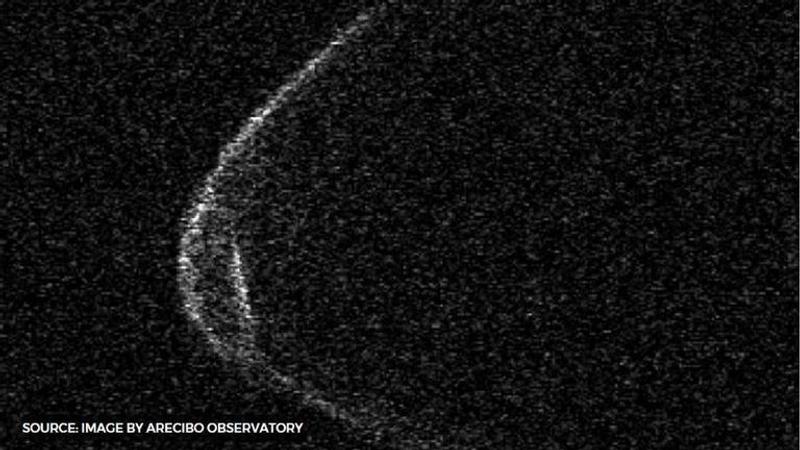Published 14:16 IST, April 25th 2020
Massive asteroid flying past Earth next week looks like it's wearing a 'face mask'
Arecibo Observatory in Puerto Rico recently shared an image of an asteroid that looked like it was wearing a 'face mask'. This image has now gone viral online.

Right now, the world is worried about the COVID-19 pandemic. In fact, people are so worried about the virus that even celestial bodies look like they are wearing face masks. Recently, Arecibo Observatory in Puerto Rico shared an image of a 1.5 kilometres wide asteroid that is set to fly by Earth. This asteroid is almost half the size of Mt Everest and amusingly looks like it is wearing a 'face mask'.
Video of face Mask wearing asteroid goes viral on social media
The above image was shared online by Arecibo Observatory in Puerto Rico just a few days ago. The team of scientists at the Observatory noticed that the giant asteroid was wearing a 'face mask' just like they were. Soon, this hilarious tweet went viral on Twitter and netizens joked that even the asteroid was afraid of COVID-19.
According to CNN, the asteroid is named 52768 (1998 OR2). It was first spotted in 1998 and is estimated to pass by Earth on April 29, 2020. According to scientists, the asteroid will pass within 3.9 million miles of Earth, which is approximately the distance between Earth and the moon multiplied by 16. While the asteroid is considered to be a potentially hazardous object, NASA scientists have stated that it is very unlikely that it will ever hit the Earth.
Updated 14:16 IST, April 25th 2020




